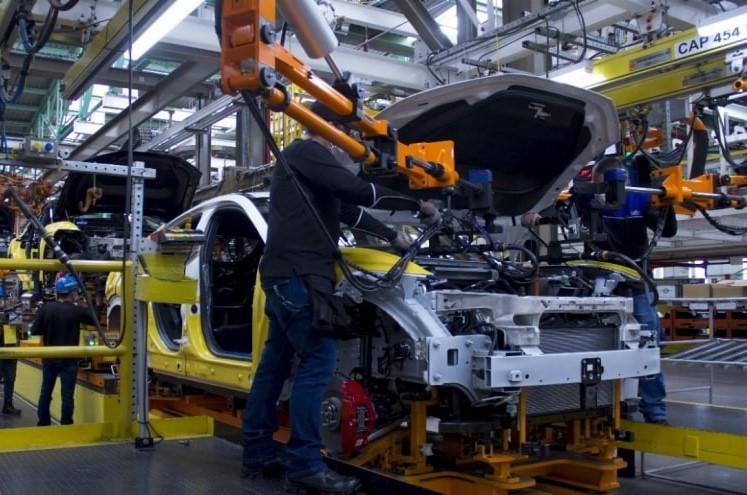

Trump Tariff Would Violate USMCA, LatAm FTAs
US presidential candidate threatens to blow up $800 billion US-Mexico trade.
BY JOACHIM BAMRUD
Republican presidential candidate Donald Trump’s plans to impose a 10% tariff on all imports would violate the four-year old US-Mexico-Canada Agreement (USMCA) and various other US free trade agreements, including with ten Latin American countries, experts say.
“It certainly would violate all U.S. trade obligations,” says Jeffrey Schott, a senior fellow at the Peterson Institute for International Economics and leading expert on international trade. “In the free trade agreements, the commitments are zero tariffs, so yes, it clearly would violate the USMCA and other free trade agreements around the world.”
Luis Rubio, executive partner in Holland & Knight’s Mexico City office and a member of the team that negotiated the North American Free Trade Agreement (NAFTA) on behalf of the Mexican government, agrees.
“Most goods traded between Mexico, United States and Canada, which originate in any of those counties have a preferential tariff treatment of 0% import duty,” he says. “The USMCA provides that any of the parties can increase tariffs on products originated from any of the other parties only on exceptional and justified basis. A 10% increase on all tariffs, seems far from being exceptional and justifiable, and therefore, will likely be construed as a trade barrier in violation of the USMCA.”
Trump has also pledged to impose a 100% to 200% tariff on cars made in Mexico to make them “unsellable in the United States.”
Although Trump has not specified if the 10% tariff also applies to trade partners, there is nothing that he said that would indicate that he would discriminate between trade partners and other countries or allies and foes, Schott says.
During Trump’s last presidency (2017-2021) he repeatedly showed a disregard for allies of the United States. Case in point: On May 30, 2019 — six months after the USMCA was signed — Trump sent shockwaves globally when he announced that he planned to impose 5 percent tariffs on all Mexican imports on June 10 that year unless that country stopped all illegal emigration to the United States. Failure to do so would result in a gradual increase of tariffs through October when they would hit 25 percent.
Ten days before his shock announcement, Trump had finally lifted year-long tariffs on aluminum and steel imports from Mexico and Canada, which were seen as the key obstacle for USMCA ratification by legislatures in the United States, Mexico and Canada.
TARIFFS HURT INTEGRATED MANUFACTRURING
Besides the clear violation of the principles set forth by the USMCA, there are many practical adverse consequences of a potential second Trump Administration increasing tariffs on goods from any of the parties to the trade agreement, Rubio points out.
“Many manufacturing facilities and or products manufactured in one member of the USMCA are integrated with other manufacturing facilities and/or products from other member, and the increase of tariffs in the US would only cause the increase of the price of products for the end consumers in the US without benefiting the competitiveness of the US industry,” he says.
One example: US carmakers as well as their European and Asian rivals manufacture autos in Mexico for the US market.
All in all, two-way trade in goods between the United States and Mexico reached $798.8 billion last year, according to the US Bureau of Census. US exports to Mexico declined by 0.3% to $323.2 billion last year, while imports from Mexico grew 4.6% to $475.6 billion.
Increased trade tensions could leave Mexico vulnerable, given that 80% of its exports are destined for the US, Fitch Ratings says.
The threat to impose the high tariffs on cars made in Mexico has led Tesla to suspend plans to build a factory there, its CEO Elon Musk told investors and analysts, according to Bloomberg.
“Trump has said that he’ll put heavy tariffs on vehicles produced in Mexico,” Musk said. “So it doesn’t make sense to invest a lot in Mexico if that is going to be the case. We kind of need to see where things play out politically.”
The factory had been eagerly awaited in Mexico, where it was expected it would draw additional auto parts companies and help create thousands of new jobs.
EXIT THREAT
Schott believes Trump could use the threat of leaving the USMCA in order to gain concessions from Mexico and Canada.
“In a sense it puts a lot of pressure on USMCA and Mexico and Canada may have to think about whether Trump will pull out of the agreement during the review if Mexico and Canada don’t accept his demands,” he says. “He’s done it before. That’s how he got the USMCA, because he was going to rip up NAFTA. …It’s possible he would do a similar strategy with threats on tariffs and six-year review and use the tariff as a bargaining chip to get concession he wants form Mexico and Canada.”
The USMCA entered into force on July 1, 2020 and replaced NAFTA, which had been in place since January 1, 1994.
Unlike NAFTA, the USMCA included a so-called sunset clause, calling for the pact to be reviewed after six years. If all three signatories are happy, the agreement is extended for another 16 years. If one of the signatories wants to pull out, there is a 10-year transition period.
However, Schott warns that there is a risk that Trump simply won’t respect the 10-year transition period, thus eliminating an assurance for traders and investors during that period.
MEXICO RESPONSE
So how can Mexico respond to any new Trump tariffs? The country has two options, Rubio says.
First, apply retaliation tariffs and/or begin consultations and eventually challenge the increase of tariffs under the dispute settlement mechanism provided in Chapter 31 of the USMCA.
“Any available option has a clear downside,” Rubio acknowledges. “The retaliation tariffs, could affect consumers on both sides of the border and further affect the commercial relationship with the US and eventually the future of the USMCA. The consultation process and the dispute settlement mechanisms are complicated and may take years to get resolved. Timing is an issue not only due to fact the increase of tariffs will remain in place while a dispute settlement mechanism is being resolved but also because the treaty will be reviewed in 2026 based in its sunset clause.”
Mexico will need to prepare for possible USMCA renegotiations, especially in the automotive sector, and to develop a strong strategy to counter Trump’s trade threats, Walter Molano, chief economist at BCP Securities, said in a commentary to clients.
“The irony lies in Trump criticizing the USMCA, which he once touted as his best trade deal,” he says.
Trump had originally planned to withdraw from NAFTA outright, but in the end ended up negotiating a new trade pact to replace it.
“The UMSCA in many respects is the old NAFTA [and] the Trans-Pacific Partnership, which he deep sixed …but he was able to rework the agreement, rename it and claim it was a different agreement,” Schott says.
NAFTA marked a historic change in Mexico’s traditional protectionist policies. Except for the energy sector, all sectors of the economy were opened to foreign investments at a rate never seen before.
Despite Trump’s claims that the treaty was a failure and hurt the US, NAFTA was credited with significantly boosting US exports to Mexico. In 2019, US exports of goods to Mexico reached $256.4 billion, a fivefold increase from $41.6 billion in 1993 (the last full year before NAFTA).
Apart from the USMCA, the United States also has bilateral free trade agreements with four countries in Latin America (Chile, Colombia, Panama and Peru) and with the DR-CAFTA group (Costa Rica, the Dominican Republic, El Salvador, Guatemala, Honduras, Nicaragua).
Schott believes Trump will work to change those FTAs as well.
“Colombia, CAFTA, Chile – they are all older traditional free trade agreements,” he says. “They don’t have coverage of issues that have been included in USMCA and were in the TPP that he may want to include, such as labor and rules of origins.”
© Copyright Latinvex
RELATED ARTICLES
Impact of Second Trump Presidency on Latin America
Trump and Latin America: Winners & Losers
Fitch Warns of Trump Risk for Latin America
Latin America Most Exposed to Trump Risk
Moody’s Analytics: Trump Tariffs Would Cut Mexico Growth












